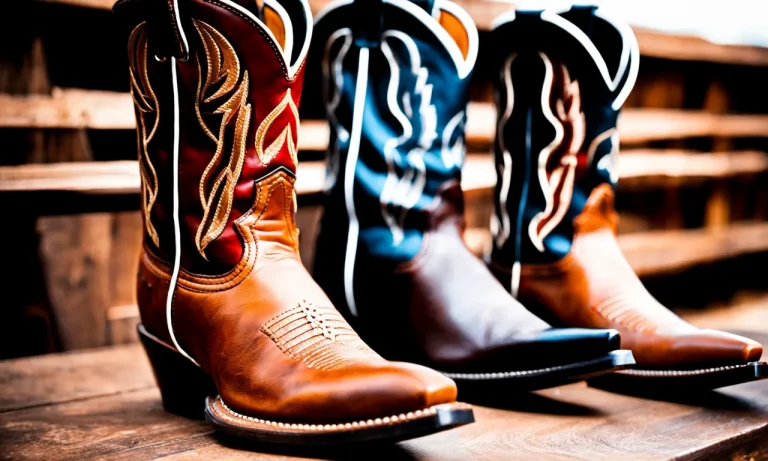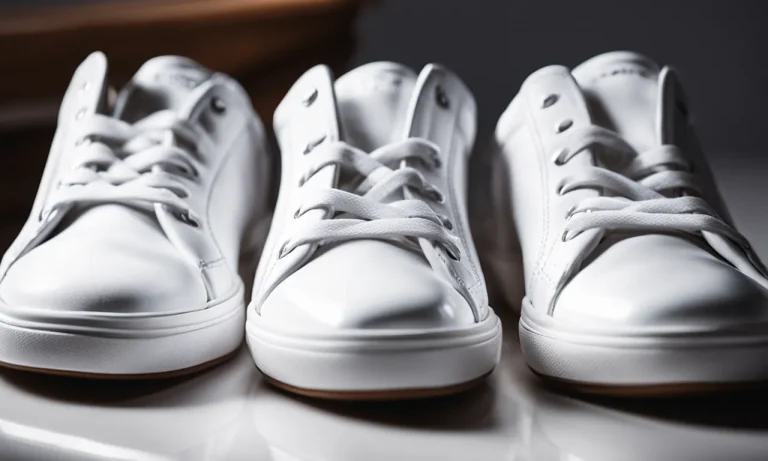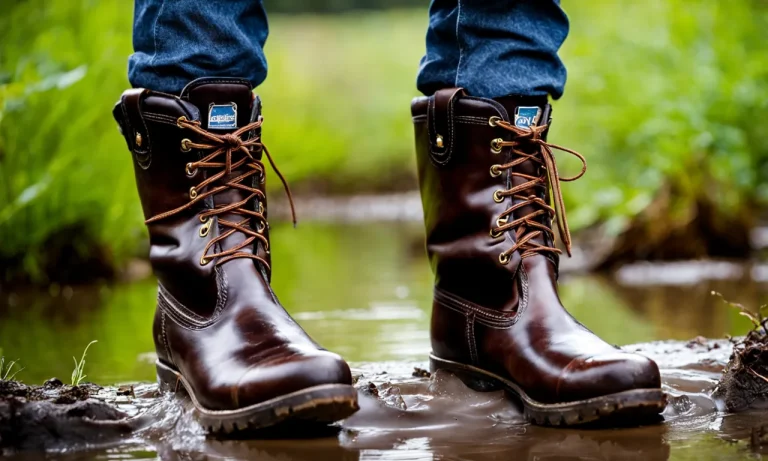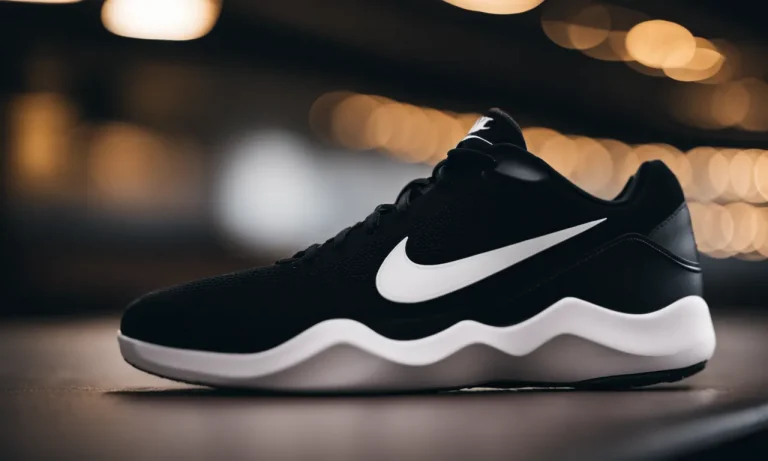Finding the perfect fit for your boots is key to comfort and performance. Boots that are too loose can cause blisters, while boots that are too tight restrict blood flow and cause pain. This comprehensive guide will walk you through everything you need to know about getting the ideal snugness for your boots.
If you’re short on time, here’s a quick answer to your question: Your boots should fit snugly around your heel and ankle without pinching, and allow wiggle room for your toes while standing up. They will feel tight at first but should break in and mold to your feet over time.
Factors That Determine Boot Fit
When it comes to finding the perfect fit for your boots, there are several factors that come into play. Understanding these factors will help you determine how tight your boots should be for optimal comfort and performance.
Foot Shape and Volume
One of the most important factors to consider is your foot shape and volume. Everyone’s feet are unique, and different boot brands and models are designed with different foot shapes in mind. Some boots will have a wider toe box to accommodate wider feet, while others may have a narrower fit for those with narrower feet.
It’s essential to choose a boot that matches your foot shape and volume to ensure a proper fit.
Sock Thickness
The thickness of your socks can greatly impact the fit of your boots. If you plan on wearing thicker socks for added warmth or cushioning, you may need to size up your boots slightly to accommodate the extra thickness.
On the other hand, if you prefer thinner socks or plan on using your boots in warmer climates, a tighter fit may be more suitable. It’s important to consider the type of socks you’ll be wearing with your boots and adjust the fit accordingly.
Lacing Technique
The way you lace up your boots can also affect the fit. Different lacing techniques can provide varying levels of support and adjustability. For example, if you have a high arch or need extra ankle support, you may want to lace your boots tightly around those areas while leaving some room in the toe box for comfort.
Experiment with different lacing techniques to find the one that offers the best fit and support for your feet.
Break-In Period
It’s important to keep in mind that boots often require a break-in period to mold to the shape of your feet. Initially, they may feel slightly tight or stiff, but as you wear them, the materials will soften and conform to your foot shape.
It’s crucial to give your boots enough time to break in before making any judgments about their fit. If you’re experiencing discomfort during the break-in period, try wearing them for shorter periods or using techniques like wearing thick socks or using a boot stretcher to speed up the process.
Remember, finding the perfect fit for your boots is a personal journey. What works for one person may not work for another. It’s essential to consider these factors and take the time to try on different boots and brands to find the one that offers the best fit and comfort for your feet.
How Tight Boots Should Feel
When it comes to finding the perfect fit for your boots, it’s important to pay attention to how they feel on different parts of your foot. Here’s a breakdown of how your boots should feel in specific areas:
Heel and Ankle
For optimal comfort and support, the heel and ankle should feel snug but not overly tight. You don’t want your boots to slip or rub against your skin, as this can cause blisters and discomfort. However, if your boots are too tight in this area, it can restrict movement and lead to discomfort.
Instep and Ball of Foot
The instep and ball of your foot should feel secure and snug in your boots. This area is responsible for bearing most of your weight while walking or standing, so it’s important to have a good fit. If your boots are too loose in this area, you may experience instability and foot fatigue.
On the other hand, if they are too tight, it can cause pinching and discomfort.
Toes and Forefoot
Your toes and forefoot should have enough space to wiggle comfortably without feeling cramped. You should be able to move your toes freely without any pain or pressure. If your boots are too tight in this area, it can lead to toe pain, blisters, and even long-term foot issues such as bunions.
However, if they are too loose, it can cause your foot to slide forward, leading to discomfort and instability.
Remember, finding the right fit for your boots may require trying on different sizes and styles. Don’t be afraid to seek advice from knowledgeable shoe professionals or consult size charts provided by reputable shoe brands.
Taking the time to find the perfect fit will ensure that your boots provide the support, comfort, and durability you need for any activity.
Tips for Getting the Right Fit
Try Boots On at the End of the Day
When it comes to finding the perfect fit for your boots, timing is everything. A great tip is to try on boots at the end of the day when your feet are slightly swollen. This is because our feet tend to expand throughout the day due to walking and other activities.
By trying on boots when your feet are at their largest, you can ensure a comfortable fit even after long periods of wear.
Walk Around the Store
Don’t just slip your feet into the boots and stand still – take them for a test walk around the store. This will give you a better idea of how the boots feel when you’re in motion. Pay attention to any areas that may feel too tight or uncomfortable.
Remember, you’ll be wearing these boots for extended periods, so it’s essential that they provide ample support and comfort.
Consider Insoles or Sock Liners
If you find that your boots are slightly too loose or don’t provide enough cushioning, consider using insoles or sock liners. These can help fill in any gaps and provide additional support and comfort. Additionally, they can help absorb moisture and keep your feet dry throughout the day.
Remember to choose insoles or sock liners that are specifically designed for boots to ensure a proper fit.
Lace Properly and Use Appropriate Socks
The way you lace your boots can make a significant difference in the fit. Make sure to lace them up snugly but not too tight, as this can restrict blood flow and cause discomfort. Additionally, wearing the right socks is crucial for a proper fit.
Opt for moisture-wicking socks that provide cushioning and support. Avoid thick socks that may make your boots feel too tight.
Allow for a Break-In Period
It’s important to remember that even the best-fitting boots may require a break-in period. Leather boots, in particular, can take some time to mold to the shape of your feet. Don’t be discouraged if they feel a bit stiff or tight initially.
Give them some time and wear them around the house before taking them on long hikes or walks. Your boots will eventually conform to your feet and provide a comfortable fit.
Remember, finding the right fit for your boots is essential not only for comfort but also for preventing foot problems. If you’re unsure about the fit, don’t hesitate to seek advice from a professional shoe fitter.
They can provide additional guidance and ensure that you find the perfect pair of boots for your needs. Happy boot shopping!
Signs Your Boots Are Too Tight
Pain or Numbness in Feet
One of the most obvious signs that your boots are too tight is experiencing pain or numbness in your feet. When your boots are too tight, they can put excessive pressure on certain areas of your feet, leading to discomfort and even numbness.
This can make it difficult to walk or stand for long periods of time, and can even cause long-term damage if not addressed.
Unable to Wiggle Toes
If you find that you are unable to wiggle your toes comfortably while wearing your boots, it is a clear indication that they are too tight. Your toes should have enough room to move and flex inside your boots.
If they are being squeezed and restricted, it can lead to discomfort and foot problems such as bunions or hammertoes.
Blisters and Chafing
Another sign that your boots are too tight is the development of blisters or chafing on your feet. When your boots are too tight, they can rub against your skin, causing friction and irritation. This can result in painful blisters and chafing, making it uncomfortable to wear your boots and potentially leading to infections if not properly cared for.
Constricted Blood Flow
When your boots are too tight, they can constrict blood flow to your feet, leading to a range of problems. Restricted blood flow can cause your feet to feel cold or numb, and can even lead to swelling and cramping.
In severe cases, it can even result in more serious conditions such as deep vein thrombosis. It is important to ensure that your boots fit properly to promote healthy blood circulation.
Remember, wearing boots that are too tight can have negative consequences on your foot health. It is important to choose boots that provide a comfortable fit, allowing for proper movement and blood circulation.
If you are unsure about the fit of your boots, it is always best to seek professional advice from a podiatrist or footwear specialist.
Signs Your Boots Are Too Loose
When it comes to footwear, finding the perfect fit is essential for both comfort and safety. Wearing boots that are too loose can lead to a range of issues, from discomfort and blisters to an increased risk of accidents. Here are some signs that your boots may be too loose:
Heel Slipping
One of the most obvious signs that your boots are too loose is experiencing heel slipping. If your heels are constantly lifting up and down with each step, it means the boots are not providing enough support and are too loose.
Not only can this be uncomfortable, but it can also lead to blisters and instability while walking or running.
Toes Slamming the Front
Another telltale sign that your boots are too loose is when your toes repeatedly slam into the front of the boot. This happens because there is excess space in the toe box, causing your toes to slide forward with each step.
This can lead to bruised or blackened toenails, as well as discomfort and pain.
Lots of Wiggle Room
If you can easily wiggle your toes or move your foot around inside the boot, it’s a clear indication that the boots are too loose. Your foot should feel snug and secure in the boot, with just enough room for natural movement without excessive space.
Having too much wiggle room can affect your balance and stability, making it harder to walk or engage in physical activities.
Blisters on Heels and Ankles
One of the most common problems caused by loose boots is blisters on the heels and ankles. When your foot moves around inside the boot, friction occurs, leading to painful blisters. These blisters can make it difficult to continue wearing the boots and may require time to heal.
To prevent blisters, it’s important to ensure a proper fit that eliminates excessive movement.
Remember, everyone’s feet are unique, so what may feel comfortable to one person may not be the right fit for another. It’s essential to try on boots and assess the fit before making a purchase. If you’re unsure about the fit of your boots, it’s always a good idea to consult with a professional shoe fitter for expert advice.
Conclusion
Finding the ideal snugness for your boots is a delicate balance. Following the tips in this guide will help you achieve a fit that is cozy without being restrictive. Keep in mind that boots require a break-in period to mold perfectly to your feet.
Don’t give up if they feel slightly uncomfortable at first. With the right fit, your boots will become an extension of your feet, providing comfort and enabling peak performance.
The key is to aim for a close, secure fit in the heel/ankle and a little wiggle room for your toes. If you feel pain, numbness or severe tightness, your boots are too small. Loose boots will lead to rubbing and blisters. Listen to your feet, walk around before buying, and allow time to break them in.
With a properly fitted pair of boots, you’ll be ready to take on any adventure in comfort and style.






